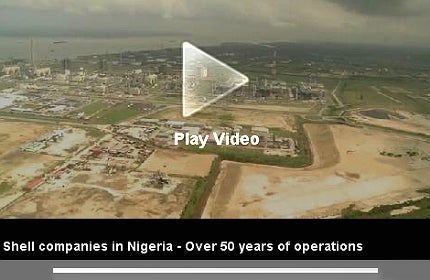The PSVM development area is situated in the north-eastern sector of Block 31 roughly 400km from Luanda. Composed of the Plutao, Saturno, Venus and Marte (PSVM) fields, it is the second oil field development area that BP has been assigned in Angola. It is also the first of four development projects announced in Block 31.
BP is the operator of Block 31, holding a 26.27% share, while the concessionaire Sonangol E.P. holds 25%, Sonangol P&P holds 20%, Statoil Angola holds 13.33%, Marathon International Petroleum Angola Block 31 has ten percent and SSI 31 has a five percent share.
The four fields are expected to produce 150,000 barrels of oil each day when operational. Delivery from the first three wells of the first oil field commenced in January 2013. The wells are producing approximately 70,000 barrels of oil per day. The second and third oil fields will start production by 2013 and the fourth oil field in 2014.
Plutao, Saturno, Marte and Venus fields
Implementing seismic imaging technologies, 19 oil field discoveries have been made in Block 31 to date. The discoveries in the PSVM area began with that of Plutao in September 2002, followed by Saturno following in July 2003, Marte in November 2003 and Venus in June 2004. The oil fields are located in water depths of about 2,000m. The first two oil fields were discovered using Ocean Rig’s Leiv Eiriksson semi-submersible rig.
PSVM development area details
BP and its partners received the approval to develop the four oil fields in the PSVM area in July 2008. The PSVM project primarily comprises of constructing a converted hull floating, production, storage and offloading vessel (FPSO) with 1.6 million barrels of storage capacity.
The project development also includes drilling 48 production wells, gas and water injection and infill wells, which will be connected to 15 manifolds and associated subsea equipments. It also includes the laying of 170km of flowlines and 95km of control umbilicals.
FPSO PSVM conversion
In July 2008, MODEC was awarded a frame agreement to supply the FPSO for the PSVM project. MODEC subcontracted Jurong Shipyard to convert the very large crude carrier (VLCC) tanker Ex-Bourgogne to FPSO PSVM. The FPSO is designed for 20 years of deployment without drydocking. Its topside modules alone weigh about 20,000t.
The conversion of VLCC tanker Ex-Bourgogne to PSVM FPSO was completed in April 2010. It included the installation of a SOFEC external turret mooring system comprising of 12 mooring lines.
Facilities onboard the FPSO include gas turbine generators, oil separation, gas injection and water injection systems.
The mooring of the FPSO to its location was completed in May 2012 by First Subsea. The FPSO has a processing capacity of 157,000 barrels of oil a day with a storage capacity of 1.6 million barrels of oil. It will also be capable of processing 245 million cubic feet per day of gas.
Contracts for the Angolan offshore project
The pre-FEED studies for the project were carried out by J.P Kenny. Heerema Marine Contractors (HMC) was involved in laying 51km of pipe-in-pipe production flowlines, 40km of service flowlines, 17km of vertical risers, 77 ancillary structures and nine piles driven at a water depth of 2,030m. The installations were carried out using its offshore vessel Balder. The contract awarded to HMC was worth $1bn.
Pipeline Technique assisted HMC by providing its HALO welding technology. The design for the umbilical riser flowline was provided by INTEC.
Technip was awarded a contract for the supply of 64km of rigid flowliness, 40 flexible jumpers and 34 umbilicals covering a total length of 43km. The contract value comes to about €460m ($615m). The company’s pipelay and construction vessel Deep Blue was also involved in the installation of 45km of 12 water injection lines and 20km of eight gas injection lines.
Aker Solutions supplied 48km of steel tube umbilicals for the project. The mooring installation for hook-up of the Ex-Bourgogne was contracted to Aker Marine Contractors. Halliburton is providing well assembling equipment for the project under a contract valued at more than $600m.
VWS Westgarth, a subsidiary of Veolia Water Solutions & Technologies was contracted to supply a single lift module seawater sulphate reduction package (SRP) system with a capacity of 18,672m³ per day and an integrated seawater reverse osmosis (SWRO) system with a capacity of 1,920m³ daily.
Related content
Xikomba Oil Field, Angola
ExxonMobil’s Xikomba deepwater development in Angola, West Africa, is located in the north-west corner of Block 15, approximately 230 miles (370km) north-west of Luanda in water depths of up to 4,850ft (1,480m).
Kizomba Offshore Field Deepwater Project, Angola
Kizomba field lies in Block 15, offshore of Angola, marking one of the first tranches of deepwater acreage offered by the Angolan Government.
Video feature: Shell’s hollow victory in the Niger Delta
Oil giant Shell recently won four out of five cases brought against it in court by Nigerian farmers seeking reparations for lost income due to pollution in the Niger Delta. Read more here.













